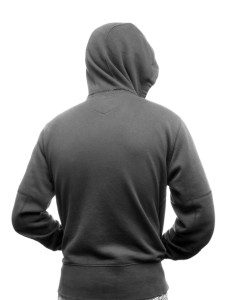 In an interview yesterday, a member of the George Zimmerman trial jury stated that race did not enter into their deliberations and that she did not think the situation would have been different had it been a white young man walking down the street of Zimmerman’s neighborhood. Given that perspective, it’s not surprising that Zimmerman was found not guilty of the murder of Trevon Martin. We all tend to categorize unknown individuals based on appearance, including dress, skin color, gender, age, demeanor, walking style. This is normal human behavior in dealing with the unknown – we put things and people into groups based on previous encounters, learned values, and media messaging. This kind of processing does not normally have deadly consequences, but it becomes problematic and potentially dangerous if we assume our initial categorizing corresponds to reality in every case and in every context, without trying to ascertain the nature of an individual beyond outward appearances. This is profiling – associating the stereotyped individual with assumed negative behavior.
In an interview yesterday, a member of the George Zimmerman trial jury stated that race did not enter into their deliberations and that she did not think the situation would have been different had it been a white young man walking down the street of Zimmerman’s neighborhood. Given that perspective, it’s not surprising that Zimmerman was found not guilty of the murder of Trevon Martin. We all tend to categorize unknown individuals based on appearance, including dress, skin color, gender, age, demeanor, walking style. This is normal human behavior in dealing with the unknown – we put things and people into groups based on previous encounters, learned values, and media messaging. This kind of processing does not normally have deadly consequences, but it becomes problematic and potentially dangerous if we assume our initial categorizing corresponds to reality in every case and in every context, without trying to ascertain the nature of an individual beyond outward appearances. This is profiling – associating the stereotyped individual with assumed negative behavior.
It’s clear that Zimmerman’s actions were based on profiling, following Treyvon Martin because he was black, male, young, and wearing a hoodie. On NPR this morning as part of the “race card project” (creating 6-word statements about race) there was discussion about what message is sent by someone wearing a hoodie:
A woman named Bethany Banner of Kalamazoo had this ah-ha moment when she was out shopping one day. It starts raining. She pulls her hoodie, and her six words were: ‘I’m allowed to wear a hoodie’. Because she realized in that moment that no one would ever look at her, as a petite white woman, and assume that she was someone dangerous because she had this hood up over her head.
Treyvon Martin made the mistake of thinking he too would not be looked at askance when wearing a hoodie.
Another jolting quote came yesterday from George Zimmerman’s brother, who was complaining that his brother was afraid of retribution : “There are people that would want to take the law into their own hands as they perceive it, or be vigilantes in some sense”. I think he missed the irony of George Zimmerman fearing someone acting outside official channels and taking matters into his own hands.
Although hooded garments date back to medieval times, knights and monks, their advance into mainstream fashion really began in the 1930s, where a little company called Champion produced hooded sweatshirts to help outdoor workers in upstate New York battle the cold. It wasn’t until the 1970s, though, when hip hop culture, Rocky Balboa, graffiti and break dancing became hot, that hooded sweatshirts—then-coined “hoodies”—really took flight.